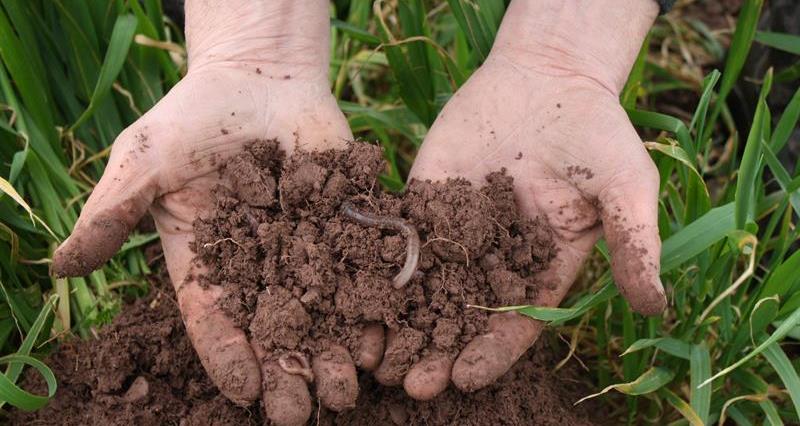The aim:
To protect the carbon stored in farmland soils and increase soil organic carbon (SOC) where possible to remove carbon from the atmosphere and sequester it in soil.
The actions:
- Maintain current levels of soil carbon through good soil management
- Adopt farm practices which build soil organic matter, sequestering carbon in soil
The results:
For the business:
Higher levels of soil organic matter (SOM) including soil organic carbon (SOC) are linked to higher yields, reduced reliance on artificial fertiliser and plant protection products, better water retention, a lower risk of soil erosion and greater soil biodiversity.
For net zero:
Over 10 billion tonnes of carbon are stored in UK soils (inc. grassland, arable, peatland and forest soils) roughly equal to 80 years of annual UK greenhouse gas emissions*. It is also estimated that the top 30cm of the world’s soil contain twice as much carbon as the entire atmosphere, making it the largest carbon sink after the world’s oceans**.
It is essential that this carbon stored in our soils is protected, as its release into the atmosphere could significantly worsen climate change.
How to measure success:
Annual soil testing allows you to record SOC and other components of soil, which helps you to make informed decisions on the best soil management actions.
AHDB’s ‘measuring and managing soil organic matter’ offers a concise introduction to the topic and you can find a directory of soil testing laboratories on the Tried & Tested webpages.
*Environment Agency, The state of the environment: soil, (2019).
**FAO, World’s most comprehensive map showing the amount of carbon stocks in the soil launched, (2017).
Protecting and building soil carbon
Some farm practices maintain and protect soil organic matter (SOM), more than half of which is carbon, better than others.
Building soil organic carbon (SOC) can offer a wealth of benefits for the farm business and the environment, but be aware that it is a long‑term process and changes to management practices can often take 5+ years to show results.
Soil carbon is also vulnerable to drought, flood and erosion so should not be considered a permanent carbon store. Depending on the condition of the soils, at some point they will reach equilibrium and begin leaking carbon – very healthy soils with a high soil carbon content will be unlikely to continue to sequester more.
Research into soil management for carbon sequestration is also on‑going, but we do know that soil type plays a key role in levels of carbon storage and sequestration; light, sandy soils will usually have a lower base‑level of SOC and it will be more challenging to build SOC levels than in heavier, clay soils.
As with many aspects of environmental management on farm, protect what you have first, then build on the benefits if you can.
Action |
Cost |
Time |
|
Use a rotation of at least three crops Having a more diverse rotation can support soil health improvement. Crops that support/replenish soil structure, organic matter and nutrient balance within a rotation will help improve your soils. |
£/ |
|
|
Target fungicide and herbicide applications Using precision approaches for pest and weed eradication. |
£/ |
|
|
Cover cropping Use cover cropping to improve soil structure and reduce soil erosion, as well as locking in nutrients for certain crops. |
£/ |
|
|
Introduce trees as shelter belts, hedges and consider integrated agro‑forestry Trees in and around fields capture carbon in their own biomass but can also protect soils from erosion and improve water infiltration, thereby benefiting soil health and SOM/SOC levels |
£-££
|
|
|
>Minimise soil compaction Use lightweight vehicles wherever possible and use appropriate tyres and tyre pressures. |
£/ |
|
|
Ensure appropriate drainage Ensure drains are present and well maintained where needed |
£/ |
|
|
Consider introducing min/no tillage cultivation Whilst this may not be a suitable option for all farms, measures to reduce the frequency, depth and intensity of cultivations will reduce the soil carbon loss through disturbance. |
£-££
|
|
|
Incorporate crop residues wherever possible, or return via manures This may include adding farm organic matter (sludges, digestate, compost). |
£-££ |
|
